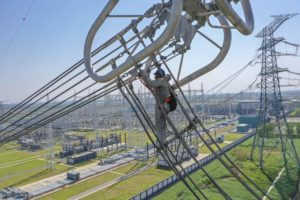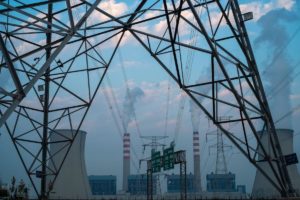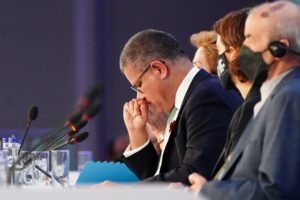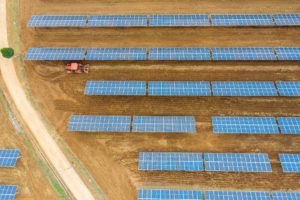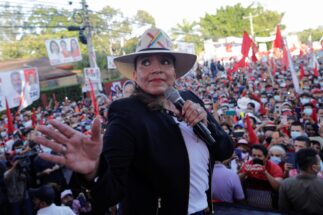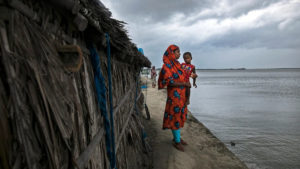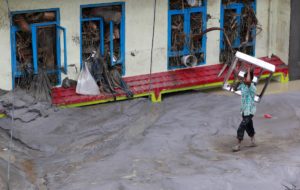Decarbonisation demands a dramatic reimagining of our modern economy. One of the most eye-catching visions is the Global Energy Interconnection project, an idea for a planet-spanning electricity grid first advanced in 2015 by the State Grid Corporation of China. The project purports to address two challenges of the renewables era: the intermittent character of renewable generation and the concentration of high-potential renewable bases in remote locations. According to the project’s supporters, its worldwide network of high-voltage transmission lines can help countries access greater volumes of renewable power from a more diverse array of sources, for a greener and more reliable grid.
The Global Energy Interconnection Development and Cooperation Organization (GEIDCO) was set up in 2016 to promote the project. It has established itself as a fixture within research and planning initiatives and high-level policy fora around international energy interconnection. Yet GEIDCO’s impact upon the development and advancement of real infrastructure projects, and institution-building work in the global power trade, has been limited. This is partly because such work takes a long time. However, there are also several ways that GEIDCO can reassess its approach to strengthen its contributions to global cross-border power trade for greener systems.
International institutions, NGOs, and energy companies around the world have explored routes to deepen cross-border power trade for decades. But most global and regional visions of grid interconnection have struggled to overcome the formidable political obstacles to interstate electricity integration. There are grid-security benefits and cost savings associated with well-designed cross-border power trading arrangements, but electricity is a politically sensitive product. Powerful domestic generation interests are reluctant to cede potential market share to producers from neighbouring countries. Trade arrangements may offer importing states greater access to diverse power supplies, but importers may have weaker control over those resources than in their own territories, and supply security may threaten to become a weapon of geopolitical leverage depending upon the character of interstate relations. These challenges bedevil all advocates of grid interconnection. GEIDCO faces further complications because of its status as a Chinese organisation linked closely to the State Grid Corporation of China. The strong position of Chinese companies and state financiers in global generation and transmission EPC and capital markets, particularly in the global south, helps GEIDCO link into useful networks for promoting its proposals.
Engineering, procurement and construction (EPC) deals are a common form of contract for infrastructure projects.
The EPC contractor takes charge of multiple aspects of the project’s design and engineering, procurement of raw materials and construction equipment, and building work itself.
The contract does not include ownership and typically an EPC contractor’s involvement in the project ends when construction is completed.
On the other hand, it encourages perceptions that the Global Energy Interconnection project is a one-sided vehicle for China to accrue economic influence and meet industrial upgrading targets.
A newly announced initiative from India and several Western partners – the Green Grids Initiative-One Sun, One World, One Grid (GGI-OSOWOG) project – underscores how grid interconnection can become an arena of political competition. This project is an expansion of India’s OSOWOG vision, which focuses upon advancing renewable (and especially solar) power trade in Asia and Africa. It aligns neatly with India’s interest in serving as a global solar leader as well as its concerns about Chinese infrastructure diplomacy.
This new project underscores the importance for GEIDCO of showing that it serves not just Chinese state aims, but the needs of international decarbonisation initiatives and its partners. It has done plenty of work on the former by producing reports on how the Global Energy Interconnection project can help achieve the UN’s Sustainable Development Goals and the Paris climate targets, and more generally by establishing itself within UN fora around climate change and energy interconnection. (A partnership with GGI-OSOWOG would further its credentials as a multilateral vision, but tensions between China and the initiative’s sponsors make this politically more fraught.)
Yet it has been weaker at linking its proposals to actual state needs. Its current planning model emphasises regional and global backbones using ultra high-voltage transmission lines in which China has world-leading operational experience. Too often, however, these proposals ignore political and institutional roadblocks to interconnection or do not align the state’s own priorities for its energy sector. GEIDCO should build more collaborative relationships with state and non-state partners to shape its planning and research agenda around immediate state needs.
One way to bridge GEIDCO’s big-picture visions of greener power systems and greater power interconnection with the actual demands of power trade is to develop programmes specifically focused on helping states develop their nationally determined contributions (NDCs) to the Paris Agreement. GEIDCO can support states in developing implementation plans to fulfil existing NDCs, strengthen future ones, and identify how power trade can assist with those aims. Examples here include:
◼️Internal planning and NDC goals: Not all states have linked their electricity supply sector internal planning with their NDC targets. For instance, Kenya’s long-term electricity supply plan does not refer to its NDC target. GEIDCO can assist states like Kenya in developing emissions targets for its electricity sector and demonstrating the role that regional transmission interconnection can serve in them.
◼️Helping states ratchet up their NDCs: Many states announced increases in climate ambition ahead of COP26 in Glasgow, but more than 100, representing more than a third of global emissions, did not submit NDCs with lower total emissions targets than those in their previous NDCs. GEIDCO can help states develop more ambitious targets that incorporate regional interconnection.
◼️Helping states develop long-term strategies to submit as part of their Paris pledges: the Paris Agreement invites states to set “mid-century long-term low greenhouse gas emissions development strategies” in order to lay out emissions reduction pathways. Only 45 countries have submitted long-term strategy documents; most of them from the global north. GEIDCO can help states develop long-term strategies and show the role that regional interconnection can play in these processes.
Where GEIDCO presents potential routes for regional interconnection, it should also devote more direct attention to the institutional demands of trade, as opposed to physical infrastructure building. That’s because it is the political and institutional aspects of power trade that trip up initiatives more consistently than the technical and infrastructure requirements. In particular, GEIDCO should focus on bringing together global south stakeholders from outside the liberalised electricity markets of the US and Europe to discuss models for interconnection well-suited to states that maintain highly vertically integrated electricity sectors with more limited market trading mechanisms.
Power interconnection can be a valuable tool for helping global south states advance decarbonisation, but the politics of progress in this sector are fraught. GEIDCO should pair its vision for interconnection with the collaborative, multilateral approach to project development that power trade projects require. By pursuing partnerships with states using interconnection to deliver upon and strengthen NDCs, GEIDCO can more effectively identify ways to match green development and interconnection with actual state needs. The resulting projects may not share the grandeur of a global backbone. But they will help GEIDCO move beyond blueprints to become a more effective and more widely accepted force for the world’s low-carbon transition.
